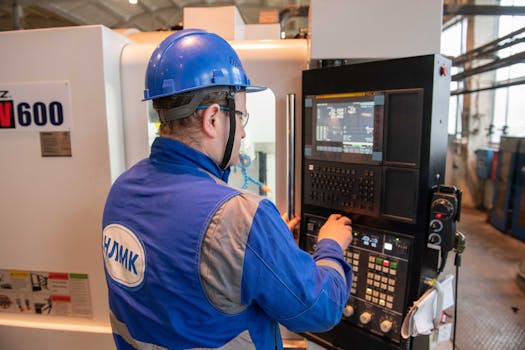Unlock Efficiency: Doge AI Tool Government Automation
Introduction
Imagine a world where government services are faster, more responsive, and incredibly efficient. Sounds like a dream, right? But what if we told you that a powerful, emerging technology could actually make this a reality? We’re talking about the potential of Doge AI tool government automation.
Government agencies today face immense pressure. They’re tasked with delivering essential services to millions, often with limited resources and legacy systems. This can lead to bureaucratic bottlenecks, slow response times, and frustrated citizens. But what if AI could be the key to unlocking unprecedented levels of efficiency and citizen satisfaction? In this post, we’ll explore how Doge AI is poised to revolutionize government automation, the specific ways it can be applied, and what you need to know to stay ahead of the curve.
Get ready to discover the exciting possibilities of Doge AI tool government automation, from streamlining administrative tasks to enhancing public service delivery. We’ll break down the core concepts, explore real-world applications, and even look at the potential challenges. Let’s dive in!
Section 1 – Explaining the Concept: What is Doge AI in Government Automation?
So, what exactly are we talking about when we mention Doge AI tool government automation? At its heart, it’s about leveraging the power of artificial intelligence, specifically advanced AI models that are often characterized by their accessibility and adaptability, to automate and improve the operations of government bodies. Think of it as giving government processes a significant technological upgrade.
Governments handle a colossal amount of data and a vast array of tasks. From processing permits and licenses to managing citizen inquiries, responding to emergencies, and analyzing complex policy impacts, the scope is enormous. Many of these tasks are repetitive, data-intensive, and time-consuming. This is where AI, and specifically the innovative approaches championed by systems like those often associated with “Doge AI” – a term that, while playful, signifies a move towards more accessible and perhaps even community-driven AI development – can step in.

The relevance of this is undeniable in today’s digital age. Citizens expect seamless, online experiences. Businesses need clear and efficient regulatory processes. And governments themselves need to operate with maximum effectiveness to serve their constituents. Doge AI tool government automation offers a path to meet these expectations, making public services more streamlined, transparent, and user-friendly. It’s about making government work smarter, not just harder.
Section 2 – Deep Dive into Subtopics: How Doge AI Can Transform Government Operations
The potential applications of Doge AI tool government automation are incredibly diverse, touching almost every facet of public administration. Here are some key areas where this technology can make a significant impact:
- Automating Administrative Tasks: Many government back-office functions involve routine data entry, document processing, and form verification. AI can automate these tasks, freeing up human staff for more complex and engaging work. For instance, processing a building permit application could be significantly sped up by an AI that can read, interpret, and validate incoming documents, flagging only exceptions for human review. This is a core function where Doge AI tool government automation shines.
- Enhancing Citizen Services: Imagine a citizen needing information about social services. Instead of navigating complex websites or waiting on hold, they could interact with an AI-powered chatbot that provides instant, accurate answers 24/7. This chatbot could be trained on vast datasets of government regulations and FAQs, offering a more accessible and efficient way for citizens to get the help they need. This improved citizen experience is a major win for Doge AI tool government automation.
- Improving Data Analysis and Decision-Making: Governments collect and analyze massive amounts of data, from economic indicators to public health trends. AI can process and identify patterns in this data far more effectively than traditional methods. This can lead to better-informed policy decisions, more accurate resource allocation, and proactive identification of emerging issues. The ability to derive actionable insights from raw data is a powerful benefit.
- Streamlining Regulatory Compliance: Businesses often struggle with understanding and adhering to complex regulations. AI can help by providing clear, accessible guidance, automating compliance checks, and even predicting potential non-compliance issues before they arise. This fosters a more supportive business environment and reduces administrative burdens.
- Optimizing Resource Management: From managing public transport schedules to allocating emergency services, AI can optimize resource deployment for greater efficiency and cost savings. For example, AI could predict traffic patterns to adjust public transport routes or optimize the deployment of fire or police units based on real-time demand.
- Fraud Detection and Prevention: AI algorithms are exceptionally good at identifying anomalies and suspicious patterns, making them invaluable tools for detecting fraud in areas like tax collection, welfare claims, and procurement. Early detection can save taxpayer money and ensure fairness.
- Personalized Public Information: AI can tailor the delivery of public information based on a citizen’s needs and interests. For example, a local government could use AI to send targeted notifications about road closures, community events, or public health advisories relevant to specific neighborhoods.

These are just a few examples, and the potential is continually expanding as AI technology advances. The key is to focus on how Doge AI tool government automation can create tangible improvements in how government functions and serves its people.
Section 3 – Real-World Use Cases and Examples
The theoretical potential of Doge AI tool government automation is exciting, but what does it look like in practice? While specific “Doge AI” branded implementations might still be emerging, the underlying principles of AI-driven automation are already being adopted by governments worldwide. Let’s look at some illustrative examples:
- Case Study: Automated Permit Processing in a Major City
- Expert Opinion: The Future of Digital Government
- How-To Guide: Implementing AI for Citizen Inquiry Management
- External Resource: AI in Public Services Report
- Internal Link: Leveraging Data for Smarter Governance
One city implemented an AI-powered system to handle the initial review of building permit applications. The AI scans submitted documents, checks for completeness, verifies zoning compliance using geospatial data, and flags any discrepancies. This has reduced the average processing time for standard permits by 40%, allowing city planners to focus on more complex cases and community engagement. This is a prime example of how Doge AI tool government automation can directly impact public service speed.
Dr. Anya Sharma, a leading expert in public sector technology, states, “The integration of AI, particularly accessible models that can be fine-tuned for specific government needs, is no longer a futuristic concept but a present necessity. We are seeing a shift towards systems that are not only efficient but also learn and adapt, providing more dynamic and responsive services to citizens.” Her insights highlight the growing acceptance and strategic importance of Doge AI tool government automation.
To implement AI for managing citizen inquiries, start by identifying the most frequent questions received by your agency. Then, curate a comprehensive knowledge base of answers. Choose an AI chatbot platform that allows for easy integration with your existing website and CRM. Train the AI on your knowledge base and conduct rigorous testing with internal staff before launching to the public. Regularly review chatbot interactions to refine its responses and identify new areas for improvement. This is a practical step towards embracing Doge AI tool government automation.
For a deeper understanding of AI‘s impact on public sector operations, you can refer to reports from organizations like the United Nations ESCAP, which often discuss digital transformation and the role of AI in government. These resources provide valuable context for implementing Doge AI tool government automation.
To further explore how governments can harness data for better decision-making, check out our related blog post: Leveraging Data for Smarter Governance. This post complements our discussion on Doge AI tool government automation by emphasizing the data infrastructure needed for AI success.

These examples demonstrate that the principles behind Doge AI tool government automation are already yielding results, making government operations more efficient and citizen-centric.
Pros and Cons of Doge AI Tool Government Automation
| Pros | Cons |
|---|---|
| ➕ Increased Efficiency and Speed: Automates repetitive tasks, significantly reducing processing times for permits, applications, and inquiries. | ➖ High Initial Investment: Implementing sophisticated AI systems can require substantial upfront costs for software, hardware, and training. |
| ➕ Improved Accuracy and Reduced Errors: AI can perform tasks with greater precision than humans, minimizing costly mistakes. | ➖ Data Privacy and Security Concerns: Handling sensitive citizen data requires robust security measures and careful consideration of privacy regulations. |
| ➕ Enhanced Citizen Experience: Provides faster, 24/7 access to information and services through AI-powered chatbots and portals. | ➖ Potential Job Displacement: Automation of certain roles might lead to concerns about job security for government employees. |
| ➕ Better Data Analysis and Decision-Making: Enables deeper insights from vast datasets, leading to more informed policy and resource allocation. | ➖ Ethical Considerations and Bias: AI algorithms can perpetuate existing societal biases if not carefully designed and monitored, requiring ongoing ethical review. |
| ➕ Cost Savings in the Long Run: While initial investment is high, increased efficiency and reduced errors lead to significant cost reductions over time. | ➖ Need for Skilled Personnel: Implementing and maintaining AI systems requires specialized expertise that may be scarce within government IT departments. |
Conclusion
We’ve journeyed through the exciting landscape of Doge AI tool government automation, uncovering its immense potential to transform public services. From streamlining back-office tasks to revolutionizing citizen interactions and enhancing data-driven decision-making, AI offers a powerful pathway to a more efficient, responsive, and effective government.
The shift towards Doge AI tool government automation isn’t just about adopting new technology; it’s about reimagining how government can best serve its people in the digital age. By embracing these advancements, governments can unlock significant efficiencies, improve citizen satisfaction, and ultimately build a stronger, more resilient society.
Are you ready to explore how these intelligent tools can benefit your organization or community? Start by researching AI solutions tailored for public sector needs, and consider piloting a small-scale project to experience the benefits firsthand. The future of efficient government is here, powered by innovation and the intelligent application of AI!